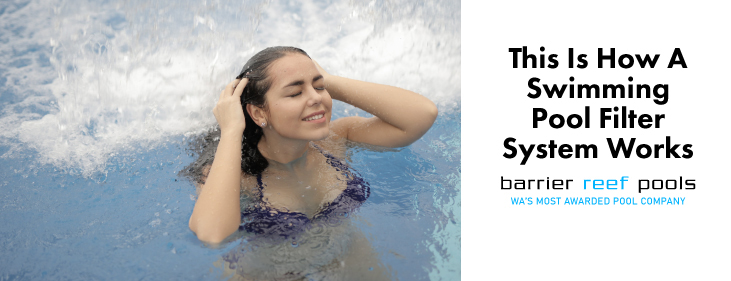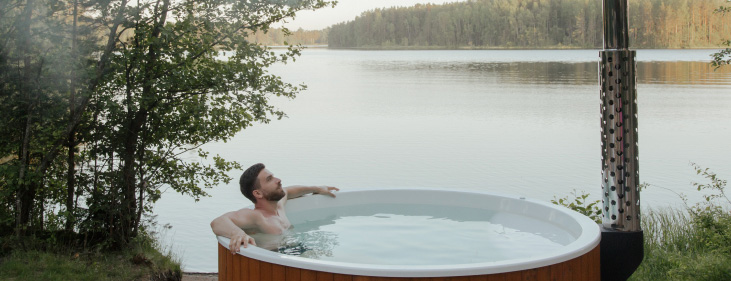Have you ever wondered how a swimming pool filter system works? You'd be surprised how often the question comes up. Whether you're planning on building your own or buying one for your existing spa, this post will answer the most common questions about pool filters—and help you get started with yours.

If you’re looking to improve the quality of water in your swimming pool, you need a filter system. A filter system will clean and balance the water in your pool to make it crystal clear. You might be wondering how this works—after all, pools are usually filled with salt water or chlorine water. So how do filters work? Here’s a general explanation:
Water passes through several layers of filtration media so that no solids or bacteria are left behind. This removes all of the bad stuff from your water and leaves only clean, fresh water that can be ingested by swimmers without any ill effects! This same principle is used for everything from home appliances like dishwashers or washing machines to cars and even food preparation surfaces such as kitchen counters.
Now, before we get into detail, let’s first discuss why having a pool filter is important:
Why should you have a pool filter?
If you have a pool filter installed on your property (and most people do!), then the job will be done automatically for you without any effort on your part at all! The best part – no more worries about catching some nasty skin infection from taking a dip in your own backyard.
Pool filters make it possible for us to swim in clear water. Filters remove dirt, debris, and other particles from the water. This means that our pools are clean enough to swim in! They are the most important part of any pool system.
What happens if there's no pool filter?
How do they work?
It all starts with the skimmer
The skimmer opens up the pool’s circulation system, which is why it’s located at the front of the pool next to the pump. The skimmer, acting like a giant funnel, pulls water in through its baskets and drains. Once in the strainer basket, the pump impeller draws water from it and forces it through the pipes in your pump house. This can be located at the front of your pool or at the back. It’s part of your circulation system because it allows you to use less power than if you had to pump all that water out as well.

Now, it’s time for the impeller
You’ve probably heard that a pump’s impeller is what creates suction, but you may not have been sure exactly how it works or why.
The impeller is located inside the pump and creates additional suction for pulling water into the filter. It’s a rotating disc made of metal that spins very fast, turning water molecules around its rim as they flow through its blades. This causes them to break up into smaller pieces and then be removed from their original form.
What about the water coming out of the backwash hose?
Filter gets to working
After your filter removes all that crud from your pool water, it sends totally clean stuff back into your swimming pool or spa. It’s like a reverse osmosis system—except instead of using a lot of energy to push water through an extremely fine membrane in order to get rid of impurities and contaminants, this process uses only energy to pump raw water through a coarse membrane that can’t hold nearly as much stuff as the fine one.
You’re probably thinking: “But wait! A reverse osmosis system costs thousands of dollars.” And you’d be right about that. But unlike regular RO systems (which use expensive pumps), this kind-of-sorta makes sense since it doesn’t require much electricity at all!
What happens when you shut off the valve?
Your swimming pool filter is the heart of your swimming pool system. It’s what keeps your water clean and clear, so it’s important to keep it in good shape. When you shut off a valve, no more pool water bypasses the filter and goes straight back into the pool minus any cleanings. This means that any debris, dirt or grime will remain on top of your water instead of being filtered out by this critical component. This not only decreases the visual appeal of your pool but also makes you more susceptible to health issues.

Conclusion
A swimming pool filter can remove all kinds of debris that are present in your swimming pool’s water. These include organic matter such as hair, leaves and bugs. Filters also remove inorganic matter like dirt and sand which enter the water body through wind or rain.
The best way to know if your filter is working properly is by seeing if there is any dirt on its surface after running it for some time. If you don’t see any dirt on the side of your filter, then it means that all particles have been removed from the water efficiently by this device alone! This means that there won’t be any more maintenance required even when using an ineffective one or two-year-old model!
We hope you enjoyed our explanation of how pool filter systems work. If you are unsure about how to check your filters, you should contact a professional.



